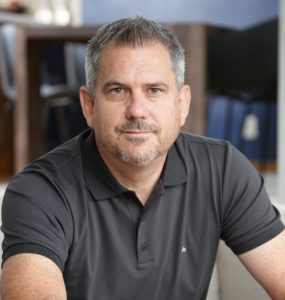Happy New Year! We had a pretty good year in 2005, with regards to overall portfolio returns, which were more in line with historical averages than the past two years. Unfortunately, for the typical U.S. investor who is overweighted in U.S. large stocks (as measured by the S&P 500 Index below), 2005 was not a very good year. Also, bonds did worse than their long-term average, but the diversified stock holdings in our portfolios compensated for the low bond returns. Our diversification into such areas as real estate, international stocks, and emerging markets stocks has been very profitable. The following chart shows the recent performance of many DFA funds (representing different asset classes) compared to the S&P 500 Index:
Market Returns for the period ending December 31, 2006
| DFA Fund / Index | 1 Year Return | 3 Year Return* | 5 Year Return* |
| S&P 500 Index | 4.89 | 14.39 | .54 |
| DFA U.S. Large Value | 10.24 | 20.56 | 9.14 |
| DFA U.S. Micro Cap | 5.69 | 26.22 | 16.44 |
| DFA U.S. Small Cap Value | 7.79 | 29.15 | 19.11 |
| DFA Real Estate (REITs) | 13.16 | 26.54 | 19.02 |
| DFA Int’l Large | 13.46 | 22.60 | 4.50 |
| DFA Int’l Large Value | 15.29 | 30.57 | 11.54 |
| DFA International Small | 21.96 | 36.35 | 18.25 |
| DFA Int’l Small Value | 23.24 | 40.36 | 22.79 |
| DFA Emerging Markets | 29.85 | 39.28 | 17.93 |
| DFA 2-Year Global Bonds | 1.89 | 1.51 | 3.16 |
| DFA 5-Year Global Bonds | 1.73 | 2.53 | 4.73 |
*Note: Returns for periods greater than 1 year are annualized. Top 3 returns are in bold.
This is the time of year when market pundits make oracular pronouncements about the year to come. Everyone has an opinion and, in the end, nearly everyone ends up being wrong because some event or trend comes along that blindsides them. For most investors, it doesn’t really matter. The truth is, only investors who plan to sell everything and spend the proceeds within the next 12 months have any real stake in what the markets do in 2006. In that case, they shouldn’t be invested anyway: they are taking too much short-term risk!
No one can predict what will happen to the financial markets in 2006, but the prediction over the next 20 years is a little easier: it is likely (although not guaranteed) that stocks will be worth more in 2026 than they are today. How much more, again, is anybody’s guess, but it is reasonable to assume the economy will grow over the long term, and that stock prices will follow. There has not been a losing 20-year period in the U.S. stock market (as measured by returns on the Standard & Poor’s 500 Index) going back to 1926, when accurate statistics began. Returns varied, of course: an investment in the S&P 500 in January 1929 averaged 3.1% over the next 20 years. On the other hand, getting started in January 1985 would have produced average annual returns of 13.2%.
Meanwhile, I will continue to help you stay on course with a well-diversified investment portfolio. Your job is to ignore the short-term, don’t panic or get greedy, and to add money to your portfolio whenever you feel you should.
Recently, Schwab Institutional announced a new service called eDelivery. With eDelivery, trade confirmations and statements will be delivered to you electronically. The benefits of this service include faster delivery, eliminating some of the problems with paper delivery (lost or damaged mail), and reducing the physical storage requirements of documents. In order to participate in eDelivery, you will need to electronically set up your accounts on www.schwaballiance.com, provide KFP with the email address that you would like your statements and confirms sent to, and reply to an eDelivery consent form that Schwab will email you. Please feel free to call me with any questions you have about this new service.
I have included several important tax-related documents in this quarterly mailing. First, for clients with taxable accounts, I have provided a Realized Gains and Losses report, which shows the net proceeds and cost basis for taxable securities that were sold during the past year. Second, I have provided a report that shows the fees you paid during 2005. Make sure that you give both of these reports to your tax accountant, if you use one.
The mission of Keystone Financial Planning is to help you to find freedom and peace in your financial life. If my services are helping you to achieve these things, then don’t forget to tell your friends and associates about your experience. My website (www.KeystoneFP.com) provides an easy way for your friends to learn more about my services.
As we start the New Year, I am working hard to improve the quality and value of my services. I appreciate your feedback. Let’s work together to make 2006 another prosperous year!
Sincerely,
About Christopher Jones
Christopher Jones is the Founder and President of Sparrow Wealth Management, a fee-only financial planning and investment management firm. Before entering the investment field, Chris was a management consultant for Deloitte Monitor. He graduated summa cum laude from Brigham Young University with a B.S. in Economics and a minor in Business Management.


